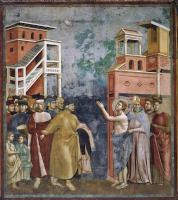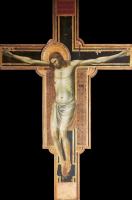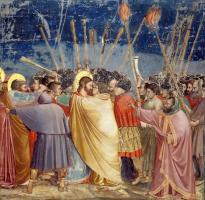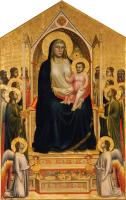Giotto di Bondone
Giotto was to Florentine painting what Duccio was to that of Siena — a pathfinder — and his work had a far-reaching effect. He moved away entirely from stylized formality, and gave his figures a greater degree of solidity and movement than had been seen before in Western art. His work represents a breakthrough in the way it expressed human emotion with imagination and understanding. He applied to his religious paintings a close observation of the world around him, so that they are believable and relate closely to life.
His success produced commissions in Padua, Naples, Milan and Rome, but most of his life was spent in his home town of Florence. Much of his work was done in the technique known as fresco, a method of wall-painting in which water-based pigment, similar to watercolour, was applied directly on to wet plaster. The paint and plaster then fused together as they dried. It was used most often in the decoration of religious buildings in Italy. The frescoes for the Arena Chapel were commissioned by Enrico Scrovegni, a member of a wealthy banking family of Padua.
Giotto decorated the chapel with scenes from the lives of Joachim and Anna (the parents of the Virgin Mary), the Virgin herself and Christ her son, which together provide a powerful narrative of the lives of Christ’s family. Each scene is set in a separate rectangular border, painted to resemble a mosaic, in which are small insets depicting Old Testament stories.
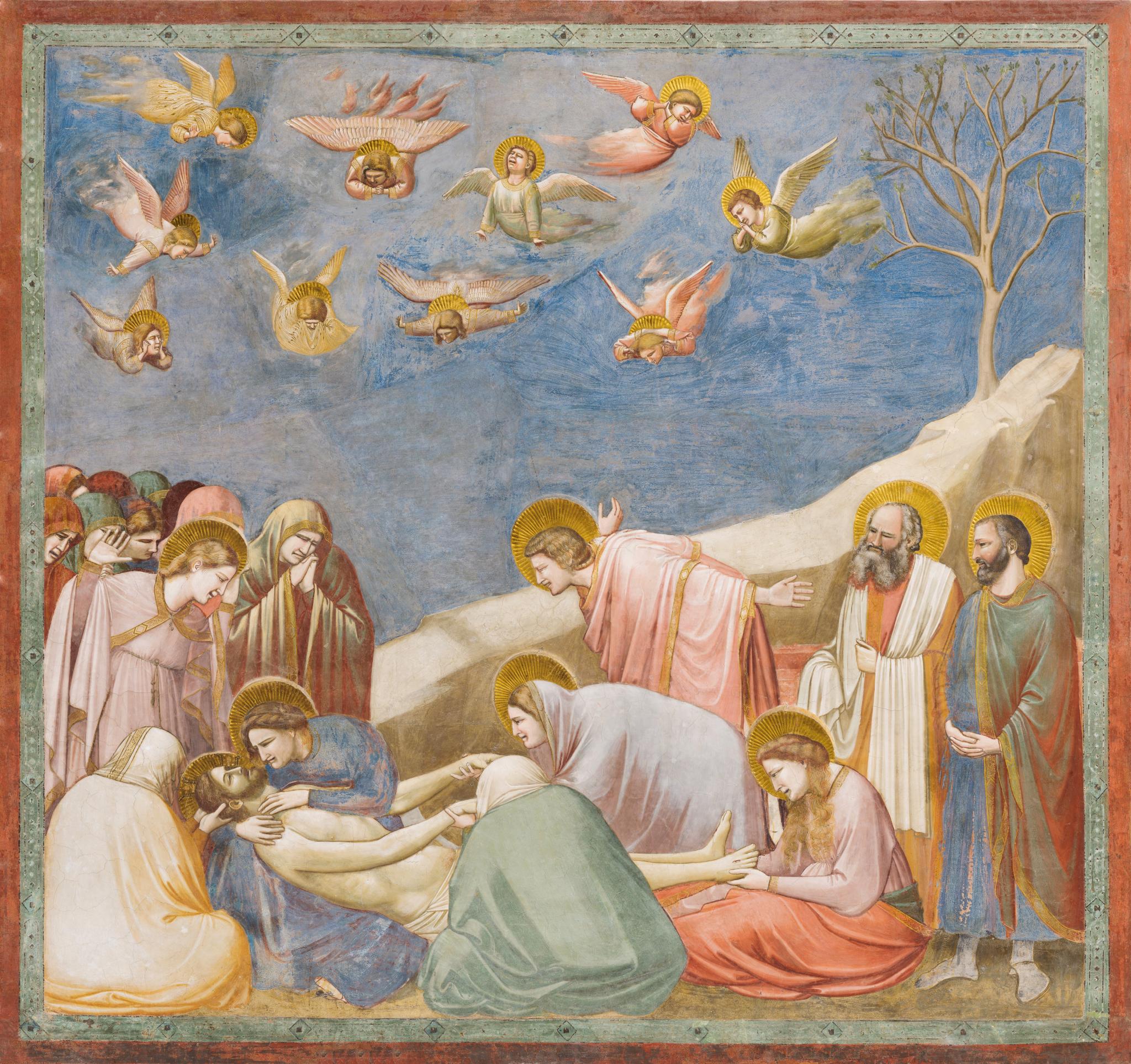 The Lamentation is simple and dramatic in composition. A large outcrop of
rock leads sharply downwards from the right in a diagonal line, so that our
attention is focused on the group around the dead Christ. His body has been
taken down from the cross, and the figures of the Virgin, Joseph, Mary
Magdalene and some of the disciples cluster round in attitudes of grief. Their
feelings are expressed in a new and lifelike repertoire of gestures. The Virgin
cradles her son on her lap, fiercely protective of him, and Mary Magdalene
holds his wounded feet. A group of angels, materializing from the clouds, weep
and wring their hands in distraction. On the rock is the skeleton of a tree
symbolizing the Tree of Knowledge, which was said to have withered and died
when Adam fell from grace.
The Lamentation is simple and dramatic in composition. A large outcrop of
rock leads sharply downwards from the right in a diagonal line, so that our
attention is focused on the group around the dead Christ. His body has been
taken down from the cross, and the figures of the Virgin, Joseph, Mary
Magdalene and some of the disciples cluster round in attitudes of grief. Their
feelings are expressed in a new and lifelike repertoire of gestures. The Virgin
cradles her son on her lap, fiercely protective of him, and Mary Magdalene
holds his wounded feet. A group of angels, materializing from the clouds, weep
and wring their hands in distraction. On the rock is the skeleton of a tree
symbolizing the Tree of Knowledge, which was said to have withered and died
when Adam fell from grace.
Separating us from a full view of Christ’s body are two cloaked and hooded figures, their backs towards us. Compared with the stiffness of Byzantine art, in which figures by tradition had faced the spectator, this was a remarkably informal and realistic device. As a result of it we are drawn into the group, as if we are looking over their shoulders and sharing their involvement in the tragedy. Giotto has depicted the event with great imagination, and conveys the human reactions to it with a compassion that brings it alive.

